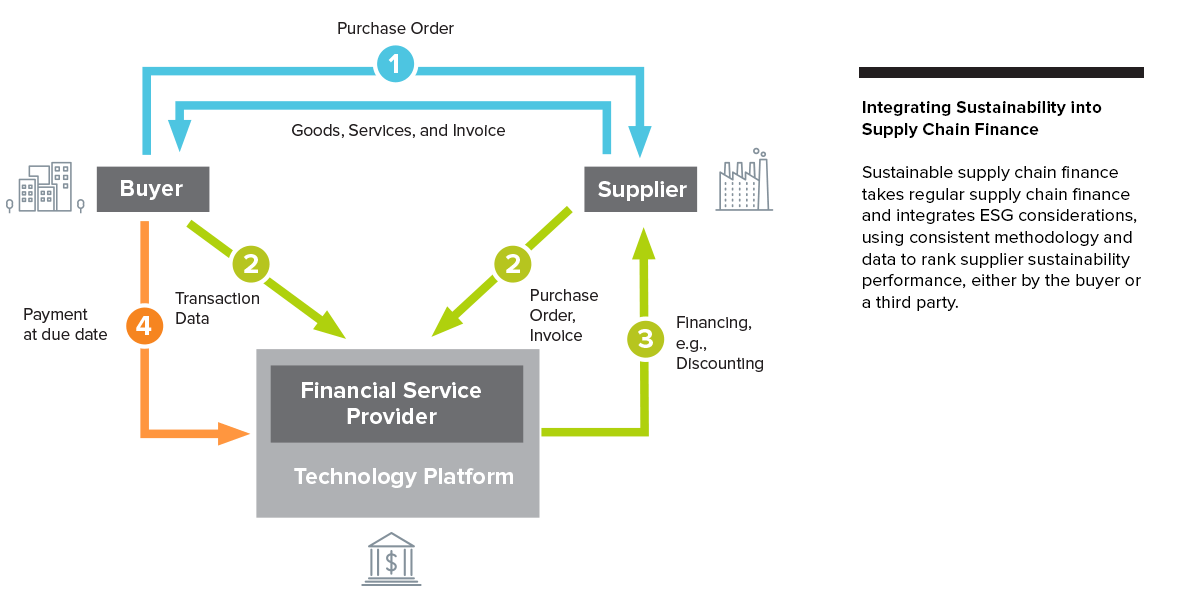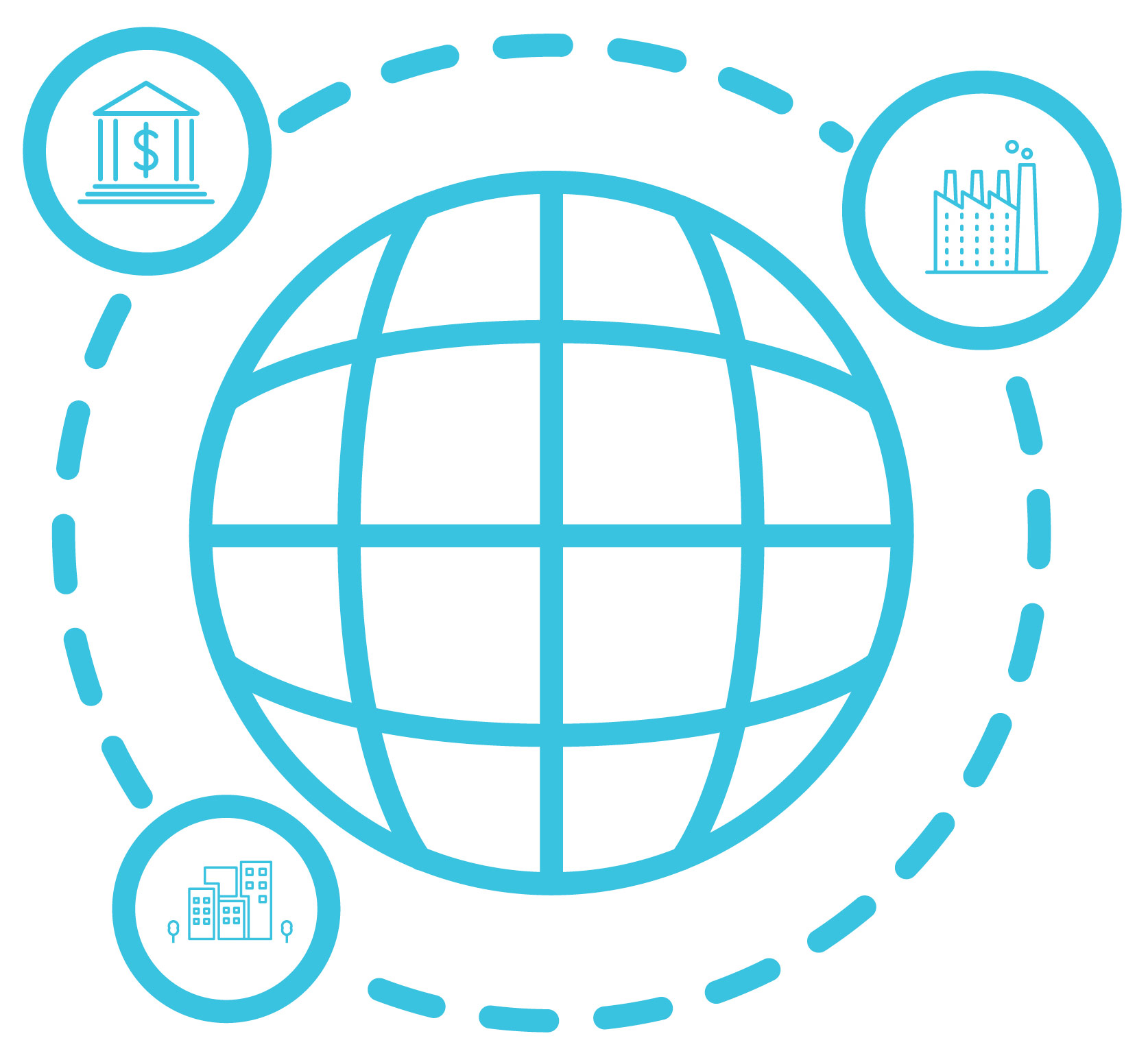Why Read This?
Leveraging supply chain finance mechanisms to incentivize sustainable behaviors in global supply chains is an opportunity for businesses and for sustainability. Embedding sustainability factors into the widespread and growing practice of supply chain finance assigns value to supply chain sustainability programs, provides tangible incentives to suppliers and their buyers, and has the potential to open new markets to banks and transform supply chains.
Companies around the world have recognized that the sustainability challenges within their supply chains are a risk and an opportunity to be managed. As such, it has become normal practice for companies to have programs in place to manage the environmental, social, and governance (ESG) risks in their supply chains. Most reputable global companies have supply chain sustainability programs in place to assess and manage the human rights, labor, governance, environmental, and other risks of their suppliers. These programs are largely based on risk management activities such as supplier assessments and audits.
However, after more than 25 years of corporate supply chain sustainability programs in action, environmental, human rights, and governance issues are still pervasive in global supply chains. There is an opportunity to do more to drive better performance among suppliers, not only at the first tier, but also at tiers deeper in the supply chain.
Why Now?
Sustainable supply chain finance is defined as supply chain finance practices and techniques that support trade transactions, in a manner that minimizes negative impacts and creates environmental, social, and economic benefits for all stakeholders involved in bringing products and services to markets.
There are five main reasons why sustainable supply chain finance is a strong opportunity today:
- Supply chain finance is a fast-growing market, with about 20 percent expansion annually.
- Supply chain finance is becoming digital; moving away from a traditionally paper-based process offers potential for innovation.
- Companies need working capital, and cash optimization is a tangible incentive for both buyers and suppliers.
- While supplier sustainability performance data is still not perfect, it is getting more and more quantifiable and readily available.
- Financial service providers offer solutions that can integrate sustainability data.
The Opportunity
Most companies are not yet putting in place sustainable supply chain finance programs, and banks are not yet readily offering these services. However, buying companies, supplying companies, and financial services can explore and maximize this opportunity in different ways.

There are US$2 trillion in financeable highly secure payables globally,* and an estimated trade finance gap of US$1.5 trillion.** We estimate that in time the sustainable supply finance market will reach one third of the market, or US$660 billion, representing a US$6 billion opportunity in sustainable supply chain revenue for financial service providers.

* McKinsey. 2015. “Supply-chain finance: The emergence of a new competitive landscape.”
**ADB. 2017. “Trade Finance Gaps, Growth, and Jobs Survey.”
Sustainable Supply Chain Finance Solutions in Detail
This report highlights three promising supply chain finance mechanisms to reward, incentivize, and fund sustainable supply chains: payables finance, sustainable trade loans, and smart contract solutions. These mechanisms have the potential to offer tangible commercial and sustainability benefits to global buyers, finance providers, and suppliers. Today there are only a handful of public examples of global buyers and finance providers that have implemented these solutions, and there are untapped opportunities to explore them further and scale successful models.
Sustainable payables finance solutions involve integrating ESG performance criteria into buyer-led supply chain finance programs, allowing global buyers to reward and provide tangible benefits (e.g., better discount rates) to select suppliers (e.g., those with strong sustainability performance). This solution applies to global companies that have or are setting up supply chain finance programs and want to offer a direct incentive to their own suppliers.
Sustainable trade loans are loans provided to a supplier or seller of goods or services for the trade of goods, which have proven sustainability attributes or environmental or social benefits. This solution applies when a supplier needs financing for sustainable goods and projects.
Smart contract solutions are self-executing contracts with the terms of the agreement between buyer and seller directly written into lines of code, including a distributed, decentralized blockchain network. Smart contracts make transactions traceable, transparent, and irreversible, the tenets of a sustainable supply chain. This solution would be best applied when multiple actors in a vertical supply chain want to create sustainable change.
Key Steps for Setting up a Sustainable SCF Program at Your Company
1. Develop shared goals between the sustainability/ procurement/finance departments and define the spirit of the program.
2. Define what a “fair deal” for suppliers looks like. Incentives need to be large enough for them to join the program—especially if they have been part of a conventional SCF scheme already.
3. Identify a financial service provider or set of financing partners (e.g., banks, investment funds, buyers’ own capital) willing to provide services in the targeted geographies and sectors.
4. Decide which sustainability aspects to include for supplier rating, e.g. health and safety, social, human rights, environment. Ideally, they would be aligned with your company’s sustainability goals and targets.
5. Select a source for supplier sustainability performance data that provides comparable data across the targeted supplier base for the SCF program.
6. If not brought forward by the potential financial service provider(s), find a suitable technology platform that allows for the integration of sustainability data. Make sure it is close to a one-click solution to make it efficient to use for all parties involved.
7. Clearly communicate to suppliers the advantages of the program and how to access it.
Call to Action
Sustainable supply chain finance is an unrealized opportunity to improve supply chains while also achieving sustainability goals. We encourage buyers, suppliers, and finance providers to leverage supply chain finance in support of responsible and sustainable supply chains.
Please contact us if you’re interested in learning more about this.
Let’s talk about how BSR can help you to transform your business and achieve your sustainability goals.









